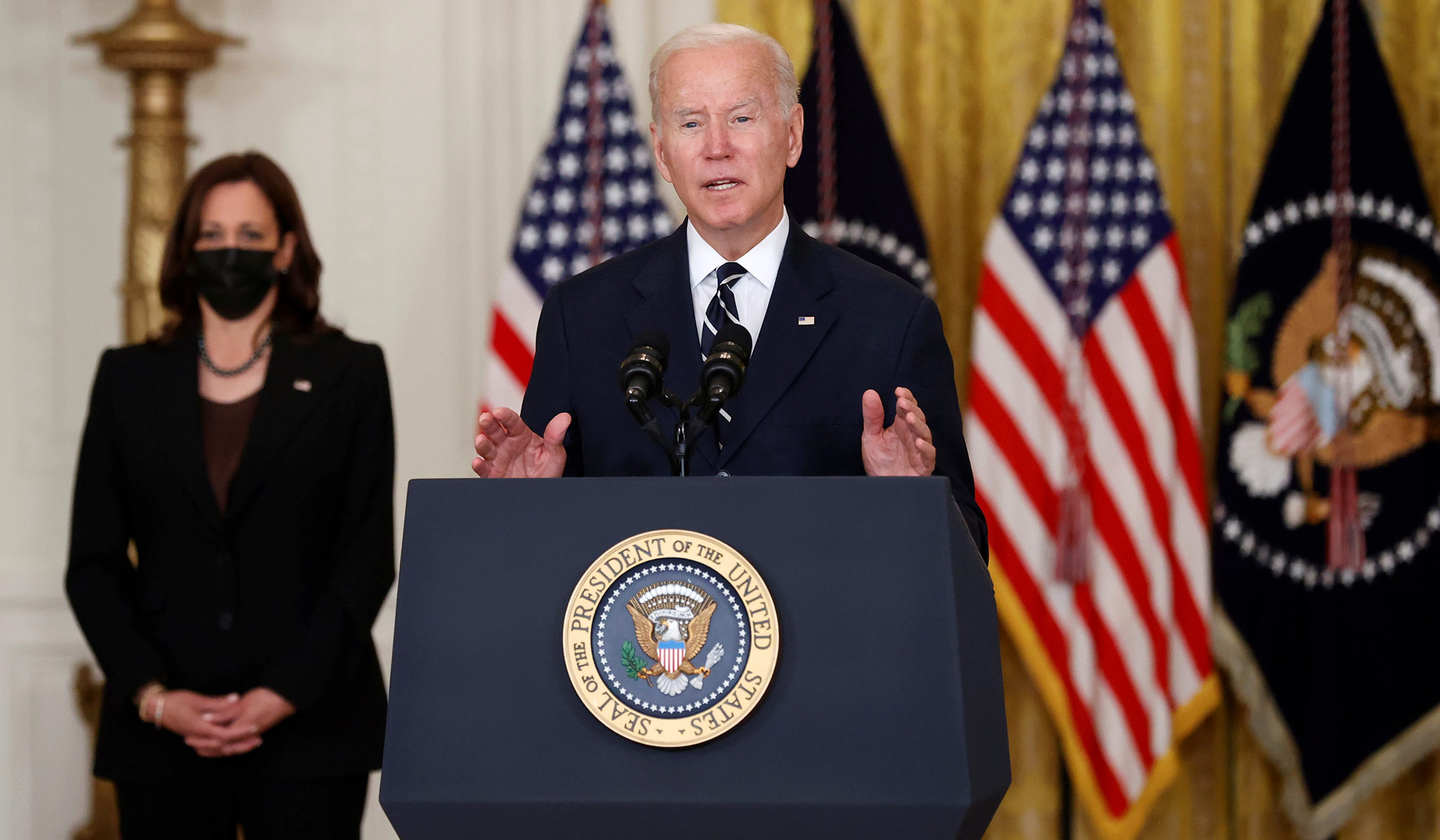After months of negotiations, President Biden on Thursday unveiled a rough outline of the latest iteration of his “Build Back Better” agenda in hopes that it would grease the wheels for House passage of the companion infrastructure bill. While the proposal is pared down from what Democrats had been promising earlier in the year, in its current form, it is still large enough to be fiscally irresponsible and economically destructive.
For those following media accounts, the $1.75 trillion cost of the new framework is portrayed as a significant compromise from the $6 trillion originally favored by Senator Bernie Sanders, or the $3.5 trillion bill that has been discussed for much of the year. But keep in mind that the $1.75 trillion comes on top of the $1.9 trillion that Democrats passed in March and the $550 billion they hope to pass in a practically linked infrastructure bill. So if Biden gets his way, even a smaller bill would mean that in the first year of his administration, Democrats will have enacted $4.2 trillion worth of new spending. That spending comes on top of the $4 trillion that Congress authorized in the final year of the Trump administration in response to the COVID-19 pandemic.
From the get-go, the conversation surrounding Biden’s agenda has been farcical. There has been no real debate over actual policy, many details of which were only known through media leaks. In this sense, the debate has been even more bizarre than the one over Obamacare, in which Democrats had a relatively clear goal — expand insurance coverage — and worked toward it, however poorly. In this case, the idea was to figure out how much spending Democrats could convince Senators Joe Manchin and Kyrsten Sinema to support, and then try to cram as much of the left-wing agenda as possible into the final bill.
The climate portion of the proposed framework includes $550 billion in spending on various initiatives to subsidize clean energy and promote its use. Hearkening back to the New Deal, it would also create a Civilian Climate Corps meant to send thousands of eager young Americans around the country doing various environmental projects. The plan would also spend hundreds of billions of dollars on other Democratic initiatives, such as housing, post-high-school education, and “equity” investments.
But the more troublesome parts of the proposal would expand, extend, or create new government programs. The bill that Democrats passed in March started sending parents monthly checks of up to $300 per child. The framework would extend that program for an additional year in hopes that it would eventually become permanent.
On the health-care front, the bill would expand Obamacare by pumping more money into insurance subsidies, a change meant to offset the damage the law did to insurance markets by triggering a massive spike in premiums. With Medicare trustees warning that the core hospital program would run out of money in 2026, Democrats responded by adding a hearing benefit to Medicare. The bill would further expand the welfare state by spending $400 billion on universal pre-K (which has been found to offer no long-term academic benefits) and on child care.
With the economic recovery from COVID-19 stalling, Democrats propose to pay for this by raising nearly $2 trillion from increasing taxes and beefing up IRS enforcement. This involves $800 billion in corporate-tax hikes (including what will effectively be an AMT for corporations) and another $650 billion in tax hikes aimed at higher-income individuals. When all the various surtaxes are added up, it would result in a 49 percent top rate once income goes above $25 million that will also hit midsized family businesses. Democrats also claim $400 billion in money from increasing IRS enforcement, which dramatically exceeds plausible estimates of how much could be raised from chasing tax cheats.
House speaker Nancy Pelosi keeps trying to argue that the bill is “about the children.” With debt as a share of the economy at the highest level since World War II, adding trillions in new obligations is irresponsible, whether or not it is offset by tax increases. Whatever resources are tapped to support new spending are resources that are no longer available for debt reduction.
A month ago, Manchin released a statement claiming, “spending trillions more on new and expanded government programs, when we can’t even pay for the essential social programs, like Social Security and Medicare, is the definition of fiscal insanity.” He was right then. If he meant what he said, he should reject this monstrosity.
Something to Consider
If you valued reading this article, please consider joining our fight by donating to our Fall Webathon. Your contribution makes it possible for us to continue our mission of speaking truth and defending conservative principles.
